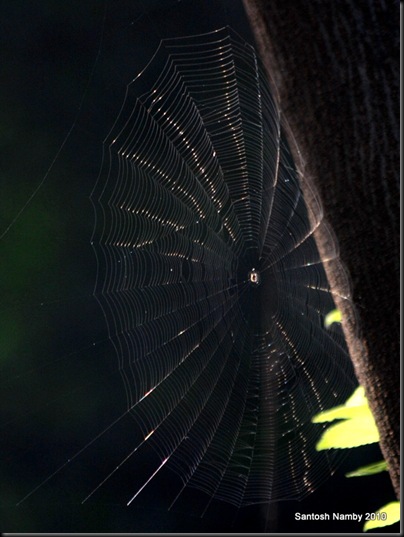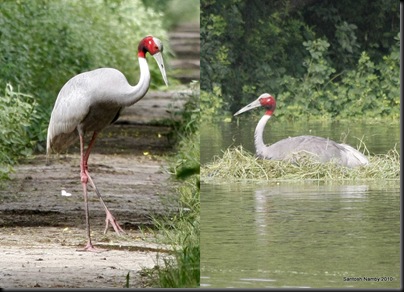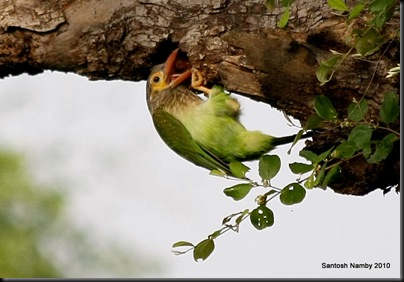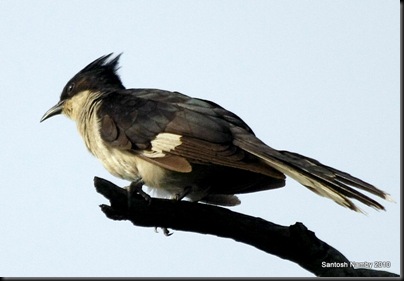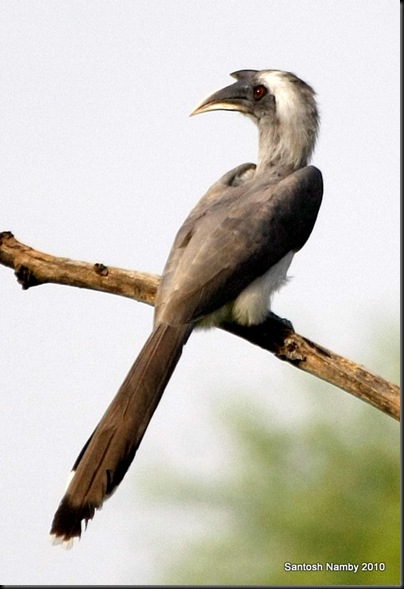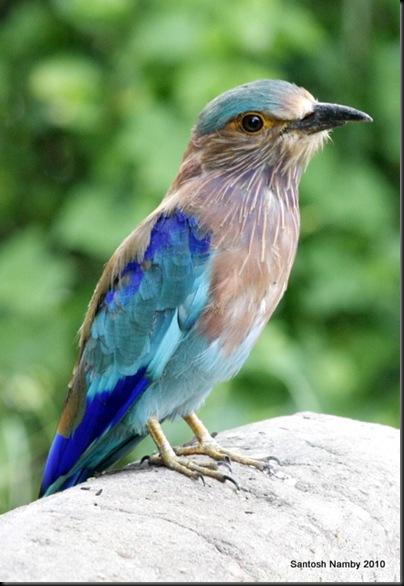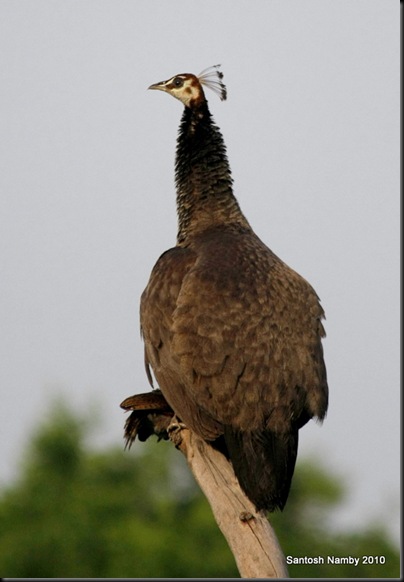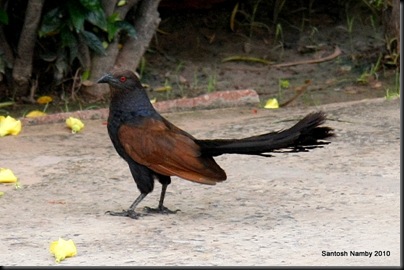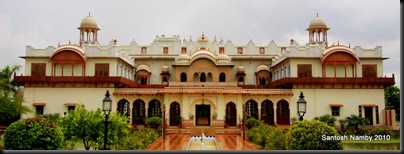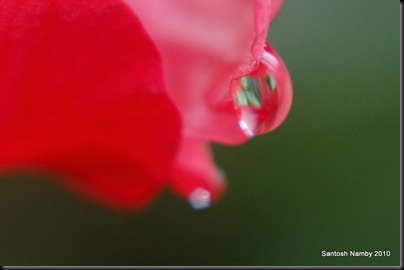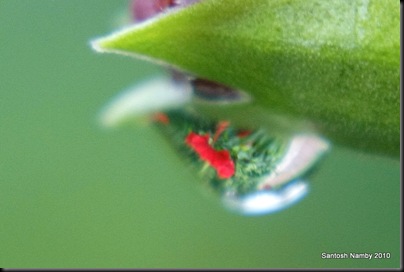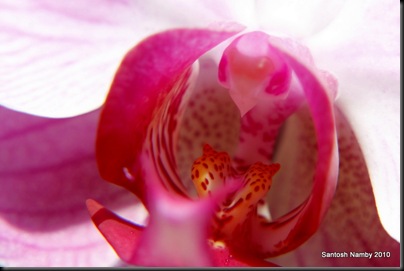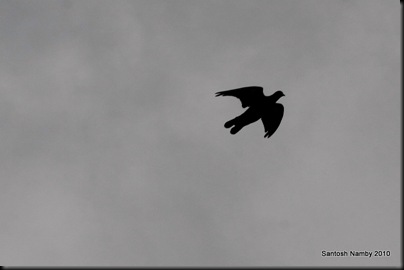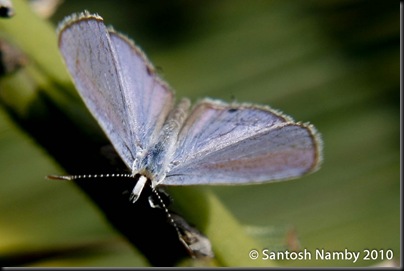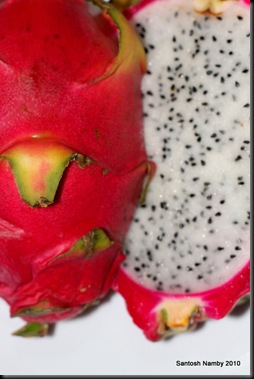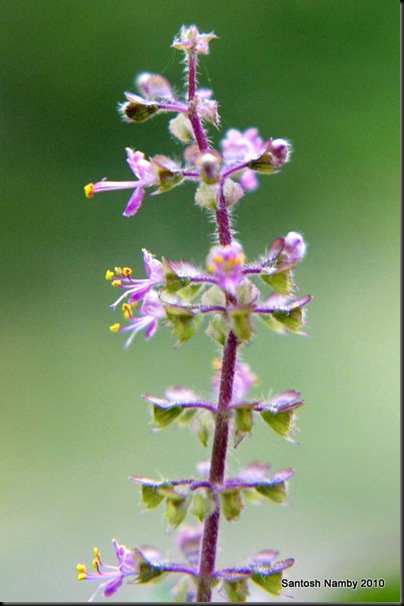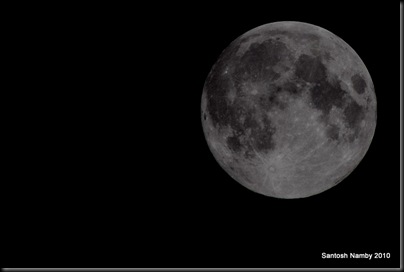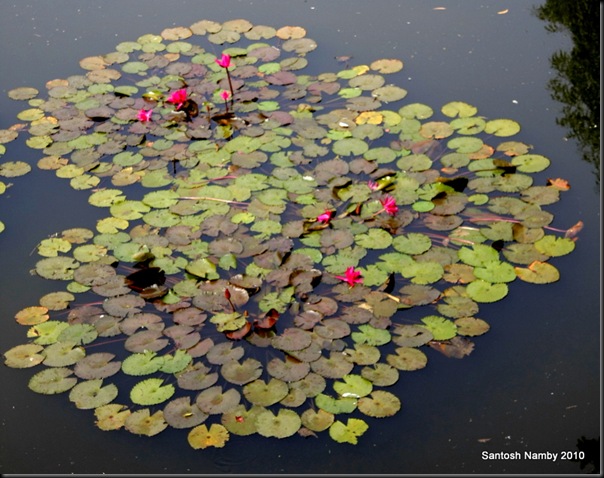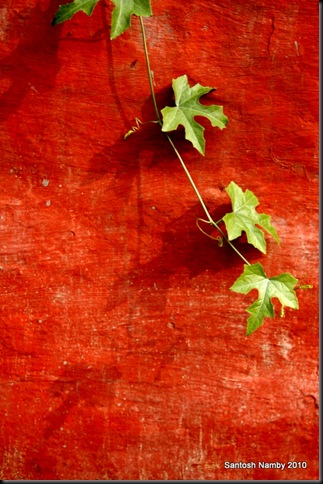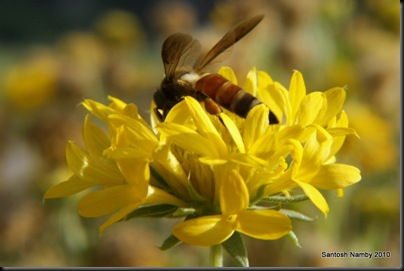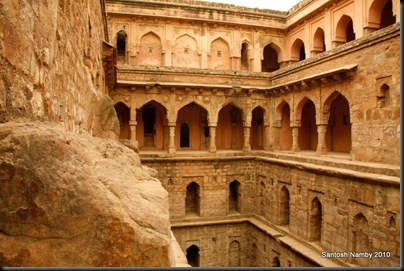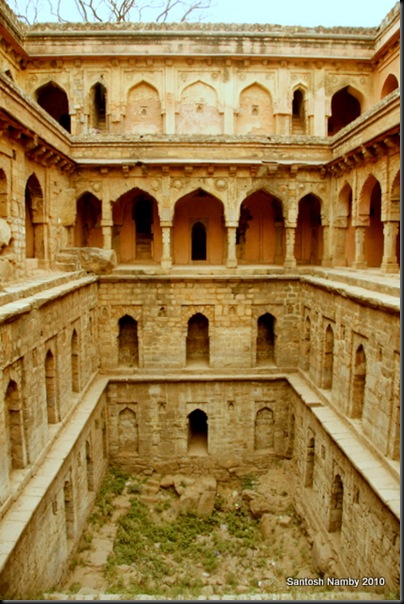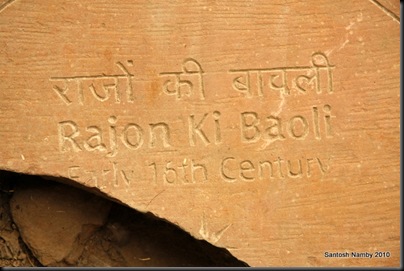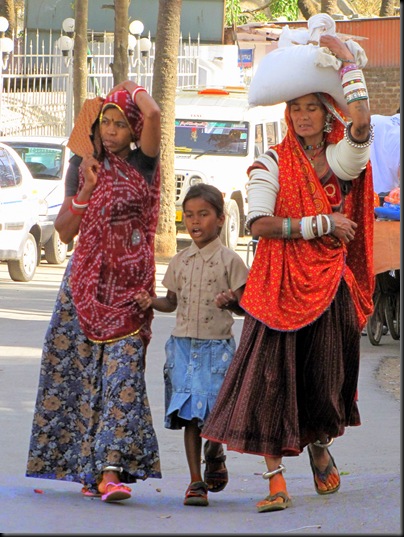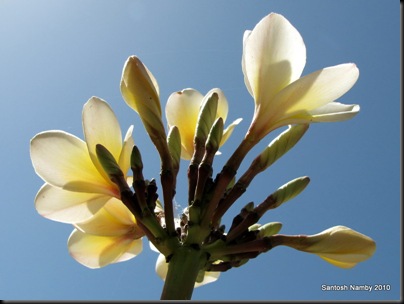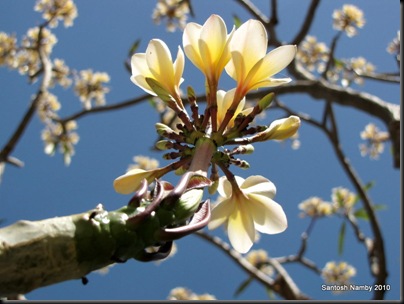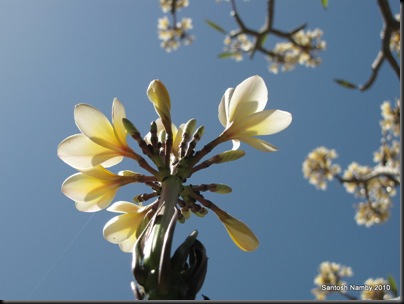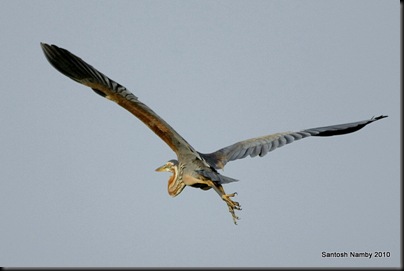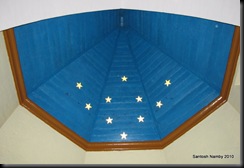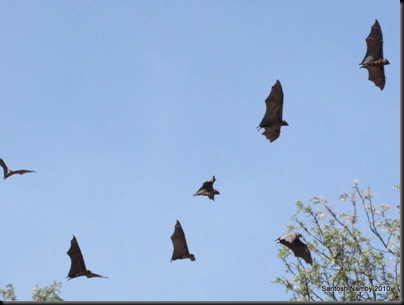Tuesday, November 02, 2010
Common Lime
Monday, November 01, 2010
Common Birdwing
Canon EOS 40D ,Canon EF 70-300mm f/4-5.6 IS USM
1/80s f/5.6 at 300.0mm ISO800
Common Rose
The Common Rose (Atrophaneura aristolochiae) is a swallowtail butterfly. It is a common butterfly which is extensively distributed across South and South East Asia.
Canon EOS 40D ,Canon EF 70-300mm f/4-5.6 IS USM
1/200s f/5.6 at 300.0mm ISO800
Saturday, October 30, 2010
Fill up my cup with the morning dew....
The onset of winters greets one with diamonds carpeting the grass and flowers. this bee was merrily feasting on nectar that was collected in this flower......
Monday, September 27, 2010
Web of Life…
Such intricate web's we build of life,
To capture all it has to offer,
But one breeze of misfortune,
One twig of bad luck,
Rends the web asunder ....
Santosh Namby Chandran
Friday, September 17, 2010
Bharatpur Diary 2010 – Sarus Crane - Breeding Pair
The Sarus Crane (Grus antigone) is a large non-migratory crane found in parts of the Indian Subcontinent. Like other cranes, they form long-lasting pair-bonds. In India they are considered symbols of marital fidelity, believed to mate for life and pine the loss of their mates even to the point of starving to death.
The main breeding season is during the rainy season, when the pair builds an enormous nest "island", a circular platform of reeds and grasses nearly two metres in diameter and high enough to stay above the shallow water surrounding it.
As you can see from this photograph, one of them is on the nest while the other keeps watch. They alternate positions several times during the day.
Thursday, September 16, 2010
Bharatpur Diary 2010 – Large Green Barbet
The Large Green Barbet (Megalaima zeylanica), sometimes also called Brown-headed Barbet, is an Asian barbet. The barbets get their name from the bristles which fringe their heavy bills.
The Large Green Barbet is a resident breeder in India and Sri Lanka. It is an arboreal species of gardens and wooded country which eats fruit and insects. It nests in a tree hole, laying 2-4 eggs.
This is a relatively large barbet at 27 cm. It is a plump bird, with a short neck, large head and short tail.
The adult has a streaked brown head, neck and breast, with a yellow eye patch. The rest of the plumage is green. The bill is thick and red. Sexes are similar.
This particular one was digging out a nesting hole in a tree.
Wednesday, September 15, 2010
Bharatpur Diary 2010 – Pied Crested Cuckoo
The Pied Crested Cuckoo (Clamator jacobinus) is a member of the cuckoo order of birds that is found in Africa and Asia. It is partially migratory and in India, it has been considered a harbinger of the Monsoon rains due to the timing of its arrival. It has been associated with a bird in Indian mythology and poetry, known as the Chatak
Tuesday, September 14, 2010
Bharatpur Diary 2010 – Indian Grey Hornbill
The Indian Grey Hornbill (Ocyceros birostris) is a common hornbill found on the Indian subcontinent. It is mostly arboreal and is commonly sighted in pairs. They have grey feathers all over the body with a light grey or dull white belly. The horn is black or dark grey with a casque extending up to the point of curvature in the horn. They are one of the few hornbill species found within urban areas in many cities where they are able to make use of large avenue trees.
Bharatpur Diary 2010 – Indian Roller
The Indian Roller (Coracias benghalensis), sometimes also called the Blue Jay is a member of the roller family of birds. They are widespread in India and are best known for the aerobatic displays of the male during the breeding season. They are very commonly seen perched along roadside trees and wires and are commonly seen in open grassland and scrub forest habitats. These birds are not migratory, but undertake some seasonal movements. Several states in India have chosen it as their symbol.
Monday, September 13, 2010
Bharatpur Diary 2010 - Peahen
The Indian Peafowl or Blue Peafowl (Pavo cristatus) is a large and brightly coloured pheasant native to South Asia, but introduced and semi-feral in many other parts of the world. The male, peacock, is predominantly blue with a fan-like crest of spatula-tipped wire-like feathers and is best known for the long train made up of elongated upper-tail covert feathers which bear colourful eyespots. These stiff and elongated feathers are raised into a fan and quivered in a display during courtship. The female lacks the train, has a greenish lower neck and has a duller brown plumage. They are found mainly on the ground in open forest or cultivation where they forage for berries, grains but will also prey on snakes, lizards, and small rodents. Their loud calls make them easy to detect, and in forest areas, often indicate the presence of a predator such as a tiger. They forage on the ground, moving in small groups and will usually try to escape on foot through undergrowth and avoid flying. They will fly up into tall trees to roost, however. It is the national bird of India.
Sunday, September 12, 2010
Bharatpur Diary 2010 – Coucal
The Greater Coucal or Crow Pheasant (Centropus sinensis) is a large non-parasitic member of the cuckoo order of birds. A widespread resident in India, they are large, crow-like with a long tail and coppery brown wings and found in wide range of habitats from jungle to cultivation and urban gardens. They are weak fliers, and are often seen clambering about in vegetation or walking on the ground as they forage for insects, eggs and nestlings of other birds.
Saturday, September 11, 2010
Bharatpur Diary 2010 – Laxmi Vilas Palace
Laxmi Vilas Palace was built in 1887 for Raja Raghunath Singh, the younger brother of the then ruler of Bharatpur, Maharaja Ram Singh.
In 1994 this was converted into a hotel. The hotel has 30 rooms and the new wing that is being added has an additional 20 rooms.
Staying at this heritage hotel, one can relive the grandeur of Rajasthan.
Friday, September 10, 2010
Mathura Diary
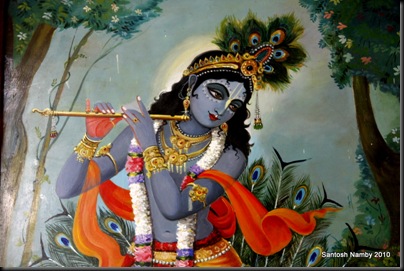
The ISKCON temple at Vrindavan, is a beautiful temple that has lovely paintings on the wall. These were being continuously touched up by the devotees. Built in 1975, personally by the founder of the ISKCON group, this temple is a beautiful example of architecture, but is quite simple as compared to the other ISKCON temples.
This temple also contains the Samadhi of the founder of the ISKCON group, A C Bhaktivedanta Swami Prabhupada. the photograph on the left is a life like statue of the founder in the temple.
The temple has three altars, with the central one being that of Radha Krishna, and was beautifully decorated as can be seen 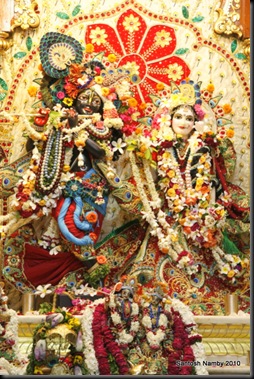 below….
below….
It is worth visiting the temple to see the architecture and the paintings on the walls.
Sunday, August 22, 2010
My attempts at droplet photography….
an unusually wet monsoon at delhi is a bane to all photographers, everyone is running scared of getting the gear wet. happened to me too; left home on saturday for a shoot at tughlakabad fort with a group of friends, but returned back after going halfway, because it was pouring and although i love getting wet in the rain, i was sure my camera would not be so accommodating.
so on sunday morning, when i was leaving for the shoot, i was praying to the rain-gods, that the skies should not open up, as i was going to meet friends rather than shoot at the jantar mantar.
the rain did oblige, and not a drop fell during the period, but the sky was overcast and light was dismal. a fellow photographer was commenting that the light was very soft and would give good pics of the monuments, to which i retorted that this light was only wonderful for outdoor fashion shoots.
it was then that i realised that sometimes opportunities present themselves, and after keenly following droplet photographs on flickr, i decided to try my hand at some droplet photography.
that was the start of this journey of discovery…….
i found an interesting hibiscus bush, with flowers and lots of droplets on the leaves, flowers and buds.
finding the bush was the easiest part. I then had to look for a droplet that was able to show me a flower within, and at an angle that i could capture easily. having a 50mm f/1.8 and a close-up kit is not the easiest equipment for such work.
after finding a beautiful bud, which at a specific angle was able to show me the flower beyond, 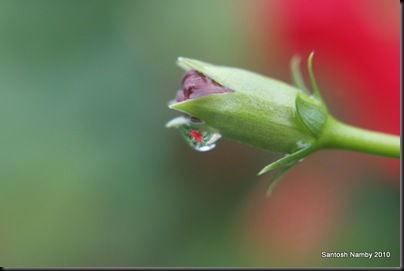 i proceeded to start my attempts at droplet photography. only to realise that every whiff of breeze was enough to shake the bud and spoil my focus. even my own breath was interfering. ultimately, after several tries, i managed to get the following pic…
i proceeded to start my attempts at droplet photography. only to realise that every whiff of breeze was enough to shake the bud and spoil my focus. even my own breath was interfering. ultimately, after several tries, i managed to get the following pic…
and that made me realise that the next attempt at droplet photography would be indoors and using a tripod. if it is to be attempted outdoors, then some mechanism to screen the object from the breeze is a must. and a tripod of course…..
Friday, August 20, 2010
Sunday, August 15, 2010
Peace in troubled times…..
A trip to my roof on 15th August, 2010, the day India celebrates its 64th Independence Day, showed my a sky beset with clouds and lots of doves flying helter-skelter. On waiting for a while more, I discerned the reason. It was a kite, chasing the doves.
Somehow, this struck me as an example of the state of our country today. We are doves, always have been. This is not because we cannot fight, far from it. We have some of the best warriors in the world, but India, has always believed that more can be achieved through peace, than through war.
Unfortunately, this is something our detractors cannot comprehend, and they persist in their attempts to make us strike back, not understanding that a sleeping lion is not disturbed by the bites of a few mosquitoes. Give us an appropriate challenge, and see how we react…..
God bless you, India…. may you have centuries of celebrations ahead……
Sunday, August 08, 2010
Plains Cupid (Chilades pandava)
a photowalk at qutab minar was a treat for me as i was gifted with a patch of cycas trees, and hoards of these beautiful butterflies fluttering around. seeing several at the cone on top, i thought that there is probably some kind of extrusion, like nectar that these butterflies are feeding upon. 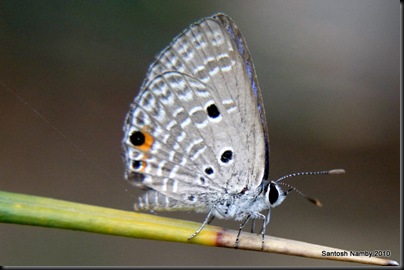
it was only after returning home and googling for them did i realise that these are a few species that use the cycas plants for laying eggs.
Saturday, August 07, 2010
Red Pitaya (Hylocereus undatus)
Friday, August 06, 2010
Holy Basil……
These are flowers of the holy Basil plant. This plant is worshiped by Hindu's and most Hindu houses in India will have one of these plants. The leaves of this plant also have medicinal properties and are chewed raw, to cure mouth ulcers.....
Monday, July 26, 2010
Guru Purnima moon….
Guru Purnima, is a full moon day that is celebrated in India to worship the guru or spiritual guide.
The Hindus celebrate this by worshiping the Sage Vyasa (Veda Vyasa), the author of the Mahabharata, while the Buddhists celebrate it in the honour of the lord Buddha who gave His first sermon on this day at Sarnath, Uttar Pradesh, India.
The Full moon on this day is said to be sacred, and people in India worship it…..
Sunday, July 25, 2010
Serendipity : Love is in the air…… er, water
A Sunday morning visit to Lodi Garden turns up an unexpected surprise. A few of us were walking back to the garden after an interesting photographic morning at the Garden, when, while crossing the Athpula Bridge, I happened to see this heart-shaped patch of lily’s. It was irresistible, I had to photograph this heart made up of numerous heart shaped leaves…..
The vine…..
Lodhi Garden is one of those places that a photographer would get subjects to shoot at anytime, but yesterdays photowalk, was a disaster. The humidity was so high and it was so hot, that it almost felt like the camera was sweating.
After 10 minutes of shooting the breeze, a few of us decided to walk over to Khan Market and on the way there, I saw this creeper on the wall and i was reminded of O’Henry’s beautiful short story “The Last Leaf”…
Friday, July 23, 2010
Moist Chocolate Muffins (eggless)
Fed up with muffins bought at stores, i decided to try my hand at some home-made chocolate muffins. I have already achieved some proficiency with banana-walnut muffins, so i wanted to try chocolate muffins, but since I have several friends who would prefer it without eggs, I decided to try eggless ones.
the ingredients are simple and are given below:
1 cup all purpose flour
3/4 cup sugar
1/4 cup chocolate - I used Cadburys cocoa
1 1/2 teaspoon baking powder
1 teaspoon vanilla extract
1/2 cup butter
1/2 cup milk
The way I go about it is simple. Set the oven up at 180 degrees Celsius (pre-heat), and get the muffin tray ready, by layering it with the paper cups.
Melt the butter, mix the butter, sugar, cocoa, vanilla and milk together. Sift the flour and baking powder separately onto a plate. Fold the wet and dry ingredients together. Fill the muffin cups till they are half full, and bake them for about 25 mins, or until a toothpick inserted into the muffin comes out almost dry.
Word of caution, do not mix (fold) the wet and dry ingredients and let them stand. They have to be transferred into the cups and baked immediately. I try and do it within 10-15 seconds.
Monday, June 21, 2010
Sex and the ‘Delhi’ City….
A recent movie experience was a nice experience both onscreen as well as off-screen. There were some scenes in the recent Movie “Sex and the City – 2” that were interesting, but what was more interesting was the reaction by the audience.
In one of the scenes, where two (girl) friends are discussing the travails of mother-hood and its attendant problems, and one keeps insisting that the other keep sipping what looks like a ‘cosmopolitan’ the entire audience were holding their collective breaths, between each revelation. And when one of them said, that when there was a suspicion of the husband straying with the nanny, she was more worried about losing the nanny, several people in the audience applauded.
Such candid feelings, would be unheard of a few years back. Today, people revel in the fact that they are connected to the happenings of the world, and empathise with the agony & ecstasy of women on the other side of the globe……
Saturday, June 19, 2010
sunsoak, sundance, buzz and sing….
It was a hot summer morning, and a few friends decided to go on a photoshoot at Jantar Mantar….
It was surprising to see that a small patch of flowers as covered in bees, despite the heat of Delhi. One must commend the hard work these little insects put in, come rain or shine….
Wednesday, June 16, 2010
Step wells or Baoli’s - 1
Rajon Ki Baoli, one of the famous step wells, is near Adham Khan’s Tomb, in Mehrauli. This magnificent three-storeyed step well is believed to have been built by Daulat Khan during the reign of Sikandar Lodi in 1516. The baoli was used by masons for some time. Hence, it got its name as Rajon Ki Baoli.
The baoli is one of the highlights of Mehrauli Archaeological Park & a favourite with every visitor. Perhaps it is to do with manner in which it is revealed to the eye: the entire structure is subterranean, so as one approaches the entrance, one can only see the the top-most storey. And each level of the baoli slowly reveals itself to the visitor as one walks towards its steps. The baoli-complex has a 12-pillared tomb & a mosque with some pretty plaster decoration on it.
Tuesday, June 15, 2010
Generation Gap
It was during a recent trip to Mt Abu in Rajasthan that I saw this family walking on the road. It was women of 3 generations of a single family and the contrasts were startling.
The oldest lady was in traditional banjaran attire, with traditional jewellery. The second lady (daughter / daughter in law) was in simple Rajasthani attire, that is worn by most rural rajasthani women, while the little girl was wearing modern clothes with a faux denim skirt and a top.
Monday, June 14, 2010
Plumeria Alba
Plumeria (common name Frangipani) is a small genus of 7-8 species native to tropical and subtropical Americas. The genus consists of mainly deciduous shrubs and trees.
Plumeria is related to the Oleander, Nerium oleander, and both possess poisonous, milky sap, rather similar to that of Euphorbia. These are now common naturalised plants in southern and southeastern Asia.
In local folk beliefs they provide shelter to ghosts and demons. They are associated with temples (hence the common name – temple tree) in both Hindu and Buddhist cultures, though Hindus (except on Bali) do not use the flowers in their temple offerings.
(Information source: Wikipedia)
Saturday, May 22, 2010
Purple Heron (Ardea purpurea)
An early morning walk at the Yamuna Biodiversity Park, at New Delhi was a visual treat. This park was developed to retain the species growing around the Yamuna River and to provide a habitat for wet-land birds. There are a large number of bird species here as well as several butterfly species. This will be a series of photo blogs to showcase the rich diversity of this oasis of clear water and greenery in Delhi.
The Purple Heron (Ardea purpurea) is a wading bird in the heron family Ardeidae, breeding in Africa, central and southern Europe, and southern and eastern Asia. The European populations are migratory, wintering in tropical Africa; the more northerly Asian populations also migrate further south within Asia. It is a rare but regular wanderer north of its breeding range.
Monday, May 03, 2010
Watercarriers
Come summers and a common sight all over India is women, of all ages carrying water from a central point, be it a well, a bore-well, a pond or sometimes in extreme cases from tankers supplying water. This water is used for cooking and other uses in the house.
Sunday, May 02, 2010
St. Saviours Church, Mt. Abu
 A recent visit to Mt. Abu at Rajasthan was a visual delight, especially after the dusty and hazy Delhi skies, it was a treat to see clean, washed blue skies.
A recent visit to Mt. Abu at Rajasthan was a visual delight, especially after the dusty and hazy Delhi skies, it was a treat to see clean, washed blue skies. 
Opposite my rest house was this quaint little church, which looked pristine and untouched in the morning light. I could not resist and here are a few photos of that beautiful church.
The pastor was kind enough to open it specially for me, considering that it was a working day and there were so services scheduled..
The tin roof and simple exterior masked a pleasant interior, with a few stained glass windows….. beautiful wooden pews and
a star studded ceiling….
the nicest part was that the pastor left me alone and went to complete some work, so that I had the run of the church and took my time taking the photographs that I wanted…..
the pastor left me alone and went to complete some work, so that I had the run of the church and took my time taking the photographs that I wanted…..
Saturday, May 01, 2010
Indian Flying Fox
A recent visit to Mount Abu in Rajasthan was a delight as I was able to spend time observing one of the largest flying Mammals. The Indian Flying Fox is the largest bat in the world, and is found in Mount Abu. I have taken some information that I found on a website and have given it here to help people know more about this bat.
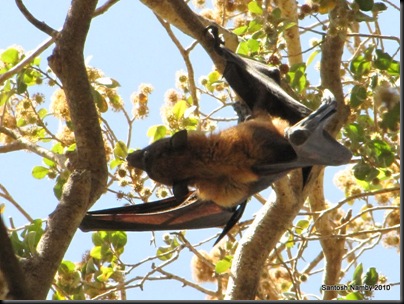 The 119 species of bats found in India, are classified into two groups – large frugivorous bats ‘Megachiroptera’ and small carnivorous bats ‘Microchiroptera’.
The 119 species of bats found in India, are classified into two groups – large frugivorous bats ‘Megachiroptera’ and small carnivorous bats ‘Microchiroptera’.
Most prominent among the first group is the Indian Flying Fox or Great Indian Fruit Bat which is also the largest bat in the world.
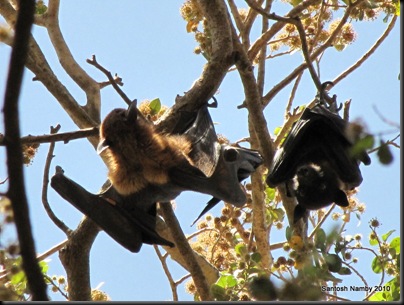 The scientific name given to the Indian flying-fox is ‘Pteropus Giganteus’, which belongs to the Pteropodidae family of Megachiroptera suborder and Chiroptera order under the subclass Eutheria of Mammalia.
The scientific name given to the Indian flying-fox is ‘Pteropus Giganteus’, which belongs to the Pteropodidae family of Megachiroptera suborder and Chiroptera order under the subclass Eutheria of Mammalia.
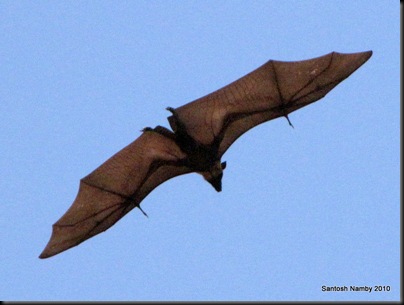
The Indian flying-fox prefers tropical and subtropical forests for dwelling and lives in colonies.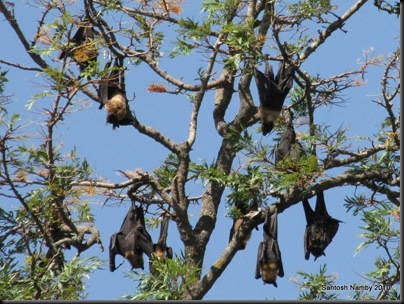
It is nocturnal in nature, which means active in the night time and resting during day. It feeds mainly on ripe fruits which include mangoes, guavas and papayas. 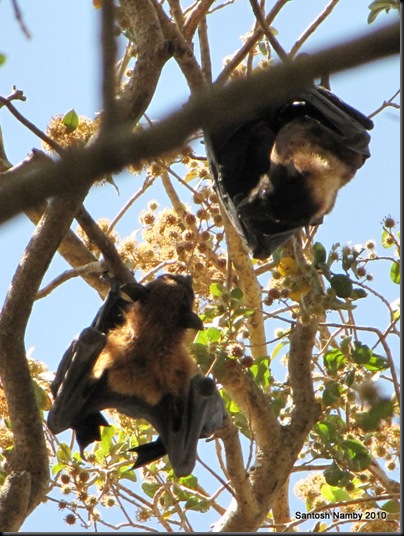
It roosts upside down like other bats and leaves the perch at night and travels in a group to a feeding site possibly more than 30 miles away. Interestingly, flying-bats fly in the same route in a queue aiming at a regular feeding station. They have the habit of establishing permanent roosting sites on large trees, even in the midst of towns.
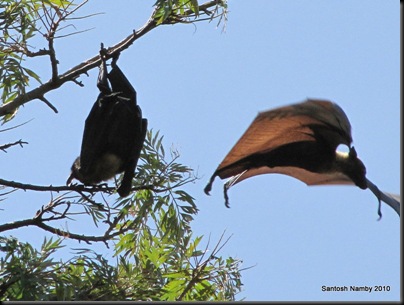
Its structure is comparatively large with an average length of 12 inches and a wing span of around 50 inches. Its head is usually reddish brown in colour which closely resembles that of a fox. A male adult may weigh between 3 to 4 lbs, while a female weighs nearly 2 lbs. In India, Indian flying-foxes are widely seen all over.
Text courtesy: http://birdwingtours.com/





